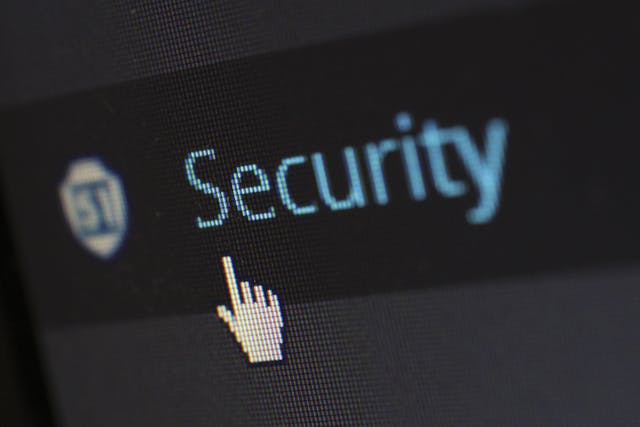Is FTP Secure? Exploring FTP Security
FTP, created by Abhay Bhushan in 1971, is still a key tool for moving files online. Originally designed for simple and efficient file transfers, FTP has become a foundational protocol in the world of internet data exchange. However, as the digital landscape has evolved, so have the risks associated with using FTP.
The protocol’s lack of built-in encryption during login and data transfer makes it vulnerable to a range of cyberattacks, including sniffing, where malicious actors can intercept sensitive information, and spoofing, where attackers impersonate legitimate users to gain unauthorized access.
Given these vulnerabilities, it’s crucial to understand FTP’s limitations and explore more secure alternatives for transferring sensitive data. Keep reading to learn how to safeguard your data, enhance FTP security, and protect your file transfers against modern threats.
Understanding FTP and Its Security Concerns
FTP, or File Transfer Protocol, is a widely used network protocol designed for transferring files between a client and a server over a TCP/IP network. While it allows users to easily upload, download, and manage files on remote servers, the lack of encryption in standard FTP transmissions makes it inherently insecure. This vulnerability exposes users to significant risks, including data interception and unauthorized access.
Is FTP Secure?
Given FTP’s lack of basic security features, many wonder if it is a secure option. Without encryption, FTP sends data in plain text, making it easy for hackers to intercept sensitive information.
To address these security concerns, secure alternatives like FTPS and SFTP have emerged. FTPS uses SSL/TLS to encrypt both command and data channels, while SFTP, based on SSH, encrypts data both in transit and at rest.
Common Security Challenges and Vulnerabilities of FTP
FTP has several major weaknesses:
- Packet Capture/Sniffing: Without encryption, malicious actors can easily intercept data transmitted via FTP.
- Brute Force Attacks: FTP’s use of traditional passwords makes it an easy target for hackers.
- Port Stealing: Hackers can take over FTP sessions by targeting the communication ports.
- Anonymous FTP Access: Allowing anyone to access FTP without a password is a big security risk.
Modern security, such as SSL certificates and two-factor authentication, is key to combat these issues. Technologies like FTPS and SFTP and encryption help protect data during transfer. Cerberus FTP Server offers a 25-day trial to help businesses secure their file transfers safely.

How FTP Encryption Enhances Security
Encryption is key to making FTP more secure. With more data breaches happening, like the 2017 incident exposing over four million customers’ info, secure FTP connections are crucial. The 2018 healthcare data breach also highlighted the need for better security.
Introduction to FTP Encryption
FTP encryption is vital for keeping data safe during transfer. It encrypts data to prevent unauthorized access and tampering and ensures that only the right person can read it.
Types of Encryption for FTP
Two main encryption types boost FTP security: FTPS and SFTP. FTPS uses SSL and TLS to encrypt data for secure connections. SFTP, with SSH, encrypts data in transit and at rest. Both protect against unauthorized access and help meet laws like GDPR and HIPAA.
Implementing FTPS and SFTP
Businesses must choose between FTPS and SFTP based on their needs. Both offer strong security but differ in how they work. FTPS is easy to set up and works well with many systems. SFTP has strong security and fits well with other tools.
These encryption types, strong passwords, updates, and 2FA can greatly reduce FTP risks.
Exploring 3 Other Methods of Securing FTP Connections
Modern organizations need more than basic FTP to keep data safe. Using advanced strategies like network data loss prevention (DLP), firewalls, and encryption can boost security. These steps follow ftp best practices and add strong security for sensitive info.
1. Network Data Loss Prevention (DLP)
Network Data Loss Prevention (DLP) tools are key to securing FTP connections. They check and manage FTP traffic to protect against data leaks. DLP tools enforce rules to stop unauthorized data sharing, keeping data safe with constant monitoring and quick threat response.
2. Firewalls and Secure Authentication Methods
Firewalls are crucial for protecting FTP data by controlling traffic flow. Setting up firewalls to only allow verified connections lowers the risk of unauthorized access. Using secure login methods like multi-factor authentication (MFA) adds an important security layer. MFA makes it hard for unauthorized users to get in, as they need more than one ID to prove who they are.
3. Encryption Protocols Beyond FTP
FTP doesn’t use much encryption, but using better encryption can make data transfer safer. FTPS makes things more secure by encrypting both commands and data with SSL/TLS. This gives secure login options and meets industry standards. Managed File Transfer (MFT) solutions use different protocols for better control and security. AS2 and WebDAV also encrypt data from start to end, offering safe ways to send files.
Adding these advanced security steps helps fix FTP’s limits and makes file transfer safer. When set up right, these methods greatly lower the chance of data theft and unauthorized access. This keeps data safe and private while it’s being sent.
Avoid Risk: Secure File Transfers With FTP and DivShare
FTP remains a widely used protocol, but its lack of inherent security features poses significant risks. By understanding these vulnerabilities and implementing encryption and other security measures, you can protect your data during transfer and reduce the chances of unauthorized access. Whether through FTPS, SFTP, or additional security methods, taking the right steps can ensure that your large file transfers remain secure in today’s increasingly dangerous digital landscape.
Do you need a reliable platform to store and share your important files? Don’t risk losing crucial documents like your college deferral letter. Sign up with DivShare today for secure and easy file hosting and sharing, and keep your content safe and accessible when you need it most.